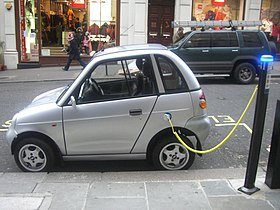
Invented around the year 1830 by Scotsman Robert Anderson, the electric car has made its first appearance in the form of a cart. This creation revealing the mechanics in the world has aroused the curiosity of many inventors, if we cite only the American Thomas Davenport and William Morrison and the French Plante. Fascinated, they decided to develop the concept of the electric car. The first real electric car unveiled in broad daylight in 1891. Since this first step, the electric vehicle has ceased to be the subject of interest for lovers of mechanical, until today.
The electric car operates from three main elements. We distinguish an energy source that is other than the battery, motor, and a control system. Energy is drawn through a single outlet. It is then returned to the battery which stores and the engine can run. The latter may be of alternating or direct current as appropriate. Its operation is optimized by the control system which also plays the role of controller. On average, the electric vehicle has a range of a few hours. If the driver keeps an average speed of 80 or 90 km / h, it can travel a hundred miles before being run out of energy. The energy supply can be from an electrical outlet 16 amps. In recent years, charging stations are arranged in the streets of major cities.Drivers can recharge their cars are paying a certain amount through cards. Some roads are also equipped with charging stations, but most countries do not have yet.
The electric car is very convenient, especially with regard to the economic side, the cost of fuel often being revised upward. It is also known as an ecological means of transportation, but with the development of significant pollution, environmental permit themselves to doubt that this feature is assigned.
The question then arises the fact that the electric car is actually green or not. Although this type of vehicle is considered to be the solution in the fight against pollution, it may as well play the role of polluter.Indeed, since its production, it can already provide its share of pollution in the example of the manufacture of the fuel cell. This requires that the hydrogen production is from a chemical reaction of oil.This creates a very different gases emission pollutants, if we cite only carbon dioxide. The electricity storage by the battery is also involved in the pollution of the air, but the degree and nature of the latter depend on the type of energy used for the production of electricity.
The electric car also emits a significant amount of carbon dioxide during its operation. Of studies have shown that the vehicle can be identified in 40 grams of CO2 per kilometer, within 4 pounds of gas per 100 kilometers. The electric car can be considered as an element within the polluter recycling, including recycling of this all battery cells, which largely polluting substances like chemicals most harmful.
However, the electric car also features bold green. Requiring no fuel, it does not mean many chemical reactions, in contrast to vehicles with internal combustion engines. It is also environmentally friendly in the sense that the production of hydrogen is by electrolysis of water. The emission of pollutants is thus minimized. The characteristics of the electric car is not yet complete to meet the criteria of a true ecology.However, this type of car is already contributing to the fight against pollution and it still has a bright future ahead of him.